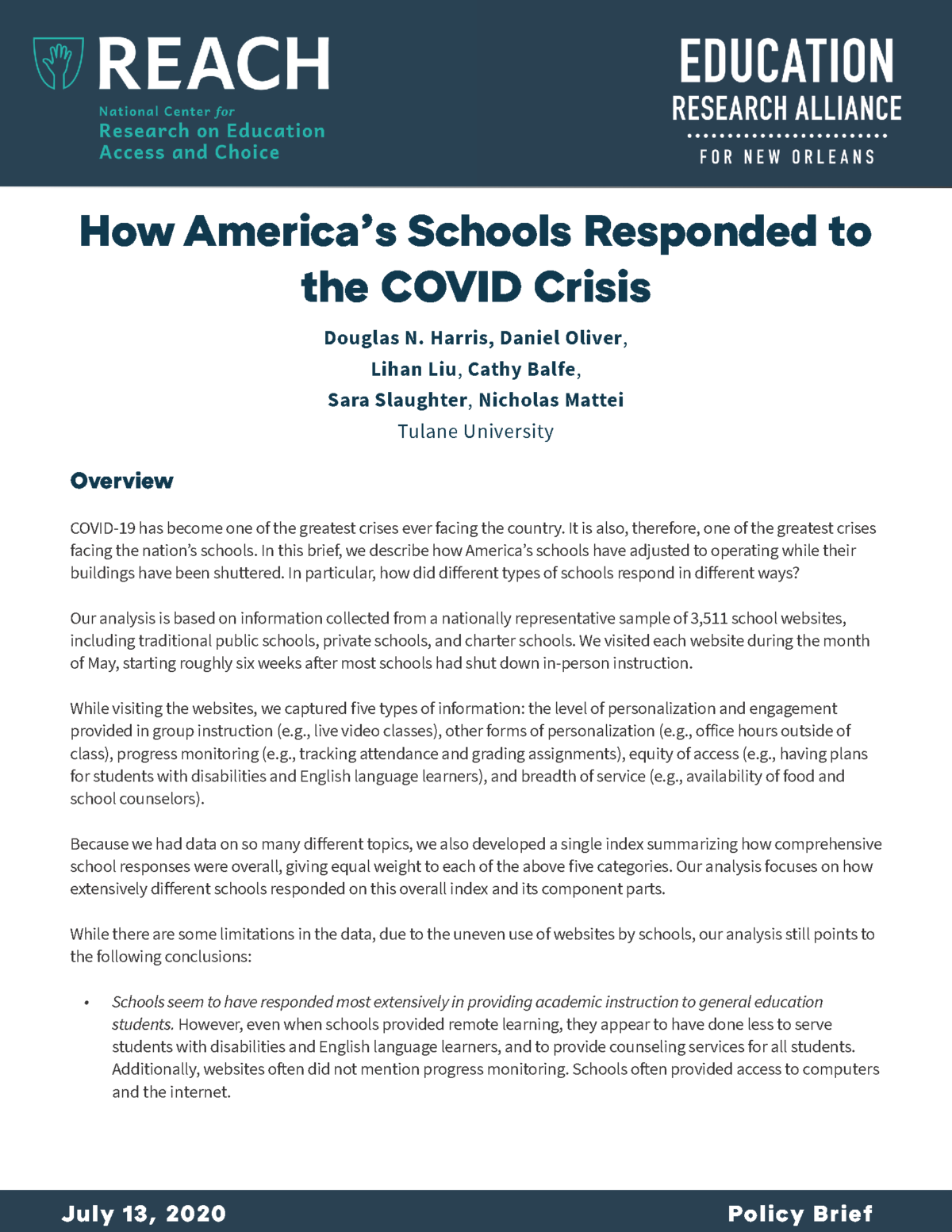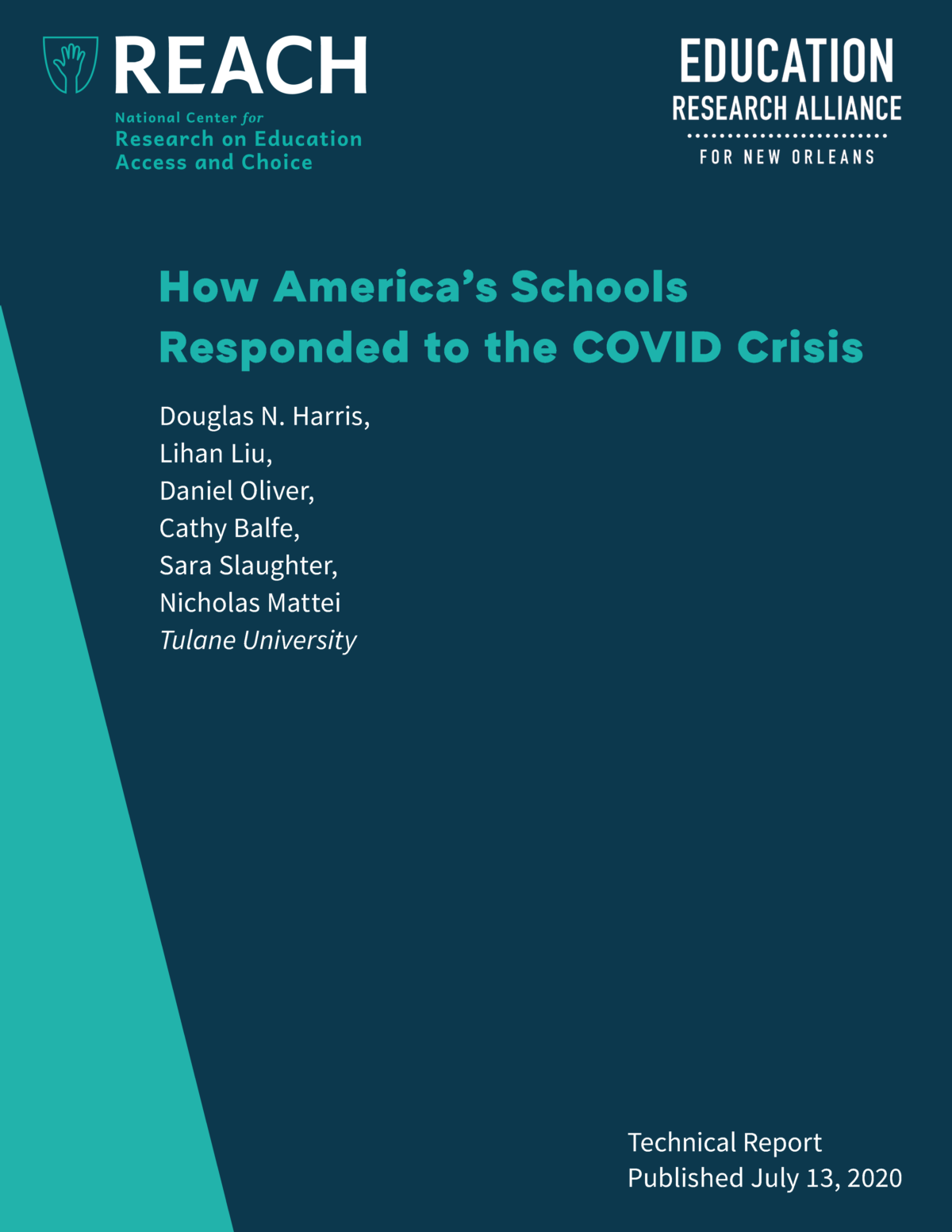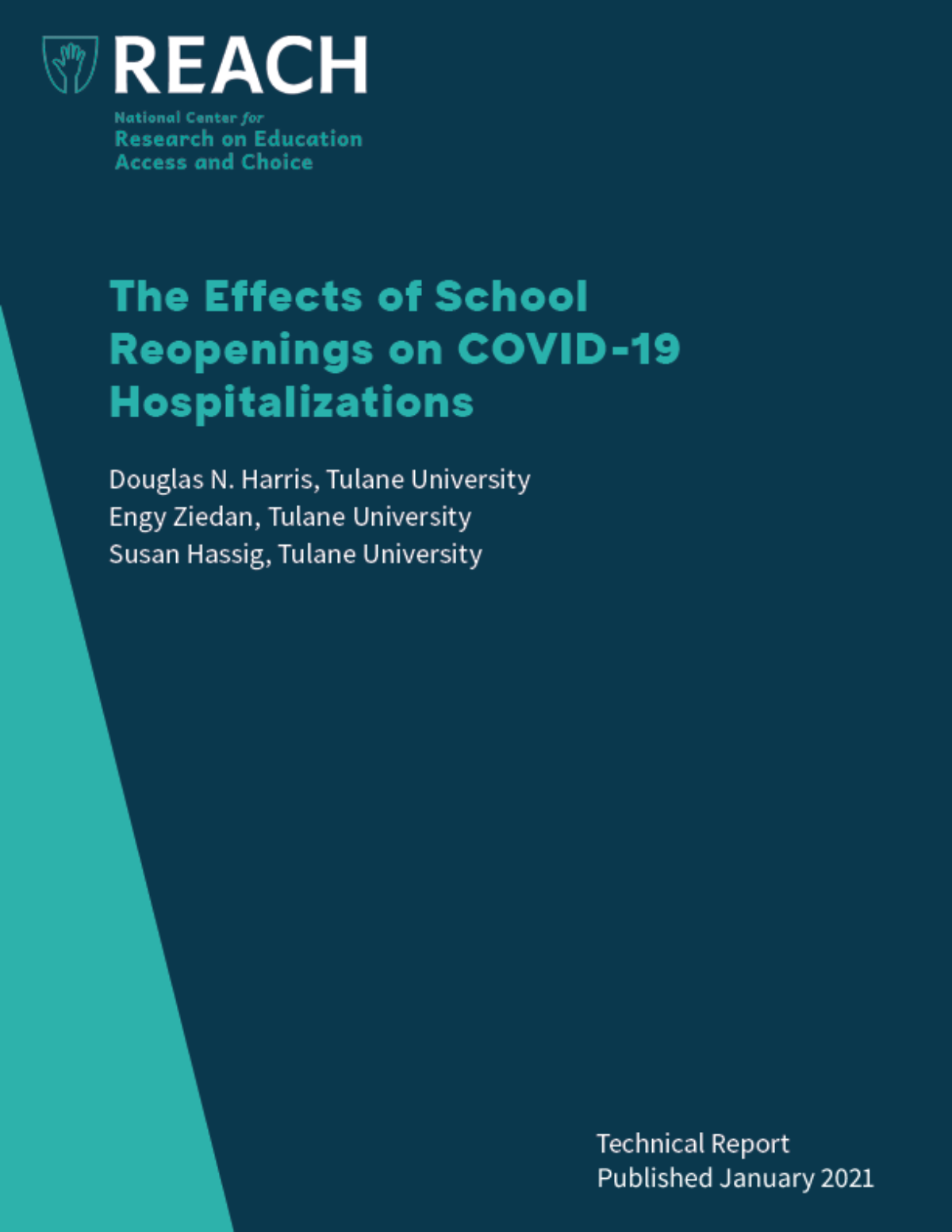COVID-19 has become one of the greatest crises ever facing the country. It is also, therefore, one of the greatest crises facing the nation’s schools. In this brief, we describe how America’s schools have adjusted to operating while their buildings have been shuttered. In particular, how did different types of schools respond in different ways?
Our analysis is based on information collected from a nationally representative sample of 3,511 school websites, including traditional public schools, private schools, and charter schools. We visited each website during the month of May, starting roughly six weeks after most schools had shut down in-person instruction.
Researchers collected data from school and district websites on more than 45 different specific school activities and actions. These included, for example, whether schools provided live online lessons and other kinds of remote learning; whether teachers held office hours; whether websites mentioned plans for students with disabilities or English language learners; and whether schools provided students with laptops, internet hotspots, and counseling services.
The study's findings include:
- The strongest predictor of how comprehensively schools responded to COVID was the education level of parents and other adults in the neighborhood around the schools.
- Neighborhood internet access was also a strong predictor of school responses.
- Traditional schools scored the highest marks in terms of providing services to disadvantaged students, while charter schools scored higher in terms of engagement outside of class and maintaining high academic standards. Private schools switched to remote learning a few days earlier than publicly funded schools, but did not outperform them by a statistically significant margin in any category.
- Special education was an area where most schools could stand to improve. Around two-thirds of schools in the sample did not even mention students with disabilities on their websites.
- Midwestern states tended to have the most comprehensive responses, while Southern states tended to have the least comprehensive. These differences hold true even after accounting for income, parent education, and other differences across states. Urban schools had somewhat more extensive responses than non-urban schools.
These findings have important public policy implications. For example, schools could direct resources, and perhaps open their doors, to those specific students who have fallen behind. Governments could expand internet access. While we make no specific recommendations, we believe this evidence, combined with other research described in the accompanying technical report, can help improve decision-making over the coming months, during a crisis that is still unfolding.


